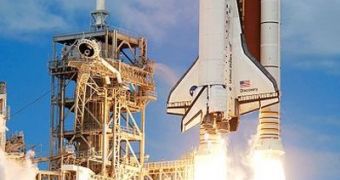According to an announcement made on Tuesday by the NASA Space Shuttle Program manager John Shannon, the American space agency could theoretically fly the three orbiter beyond their September 2010 retirement date. He explained that everything needed to do this is for US President Barack Obama and other lawmakers to give their consent, and also approve the release of additional funds. At this point, the official explained, the program takes about $200 million per month, for an estimated $2.4 billion annually. If given the same amount in 2011 as well, NASA could for example schedule more flights, as for example to the International Space Station (ISS), Space reports.
“I think the real issue that the agency and the nation has to address is the expense,” he told reporters in a briefing. At this time, NASA plans to retire its three shuttles – Discovery, Endeavor, and Atlantis – later this year, on account of their age. But many oppose this measure, which only made more sense when it was coupled with the fact that the extra funding would go to Project Constellation. With this approach to space exploration also sacked, there would be no reason to keep the three spacecrafts from going to space a few extra times. This would eliminate American dependency on Russian Soyuz capsules for access to low-Earth orbit, critics also add.
The workers dedicated to keeping the shuttles operational are also being surveyed with questionnaires every four months, to assess how they feel about the looming changes. “From a personal standpoint, I just think it's amazing that we're headed down a path where we're not going to have any vehicles at all to launch from the Kennedy Space Center for an extended period of time; to give up all the lessons learned and the blood, sweat and tears that we've expended to get the space shuttle to the point where it is right now where it is performing so magnificently. But it's a money discussion, and if we don't have the resources to do that and to continue to logistically supply the International Space Station, then I understand it,” Shannon said.
Currently, one more external tank and a pair of twin solid rocket boosters remain in NASA's warehouses. This means that the agency can fly only one more mission beyond the last four currently planned. But, after that time, if lawmakers decide to revive the program, engineers would take up to two years to restart manufacturing lines, and deliver new tanks and boosters. This gap could be addressed by spacing out the remaining space flights, Shannon said.

 14 DAY TRIAL //
14 DAY TRIAL //